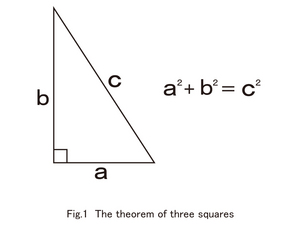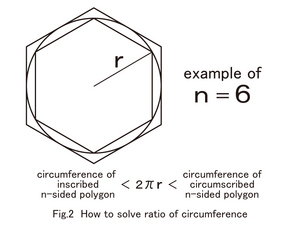Nagoya City Science Museum
TOP > Exhibition Guide > Keyword Search > Starting with "P" > pi > Formula and Figures
Formula and Figures



Purpose of Exhibition
You can learn the ratio of the circumference _ and the theorem of three squares (the Pythagorean theorem) by figures.
Additional Knowledge
[The Theorem of Three Squares]
The Theorem of three squares is referred to as the Pythagorean theorem. It means that "the sum of the areas of the two squares on the legs equals the area of the square on the hypotenuse". Pythagoras was a mathematician and philosopher in ancient Greece. Although this theorem had been well known even before he was born, it is unclear why the theorem was named after him. On a clay plate in ancient Babylonia, a description and figures are carved, which show that the theorem of three squares had already been discovered before Pythagoras.
In Japan, the theorem of three squares had been known as "The theorem of the right-angled triangle". (Koukogen no Teiri). The name "the theorem of three squares" was coined during World War II. It is said that there are some hundreds of ways to prove this theory, and even now, new ones are being invented.
[The Ratio of Circumference π]
The ratio of circumference is indicated as the Greek letter "(π)". It is the number indicating the length of circumference divided by its diameter. It has been known everywhere since before Christ that in any size of circle, the proportion of its circumference and diameter becomes a constant value, and much effort was made to develop a more accurate value. Archimedes in ancient Greece once solved the ratio of circumference using an inscribed polygon and circumscribed regular polygon in a circle. With the method, future generations discovered and solved more accurate ratios of circumference. Many other calculations were also invented, and there were even some people who devoted their lives to solving only the ratio. The calculation for the ratio of circumference is also adopted for showing computer efficiency and Yasumasa Kaneda, a Japanese mathematician, broke records of the ratio of circumference.
Article by Yoshitaka Yamada, curator
